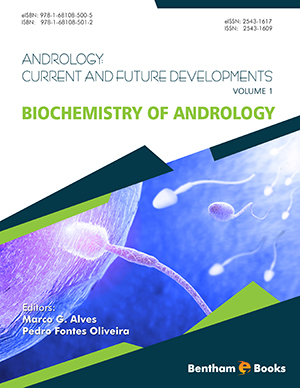Abstract
SHS investigation development is considered from the geographical and historical viewpoint. 3 stages are described. Within Stage 1 the work was carried out in the Department of the Institute of Chemical Physics in Chernogolovka where the scientific discovery had been made. At Stage 2 the interest to SHS arose in different cities and towns of the former USSR. Within Stage 3 SHS entered the international scene. Now SHS processes and products are being studied in more than 50 countries.
Abstract
Sperm released in the lumen of seminiferous tubules are functionally immature. These cells acquire maturation during their passage through the epididymis. The epididymis exhibits an extraordinary structure showing different segments with distinct luminal composition, which act as a whole for the gradual differentiation of sperm. This organ is permanently targeted by neuronal and hormonal factors, in particular by androgens. The study of the biochemical mechanisms that mediate sperm maturation has been a matter of intense debate. The current advances on the knowledge of sperm physiology was possible due to studies conducted in laboratory and domestic species, whereas in humans these processes remain to be fully explored. This is a subject with high relevance in the field of reproductive biology since defects in these events may end-up in infertility. Maturation of sperm begins in the epididymis, but does not end in this organ, since after ejaculation sperms are still unable to fertilize the oocyte. After being deposited in the reproductive female tract, sperm undergo a number of structural and biochemical changes to become “capacitated”. Non-capacitated sperm cannot interact with eggs In vivo as their failure to hyperactivate motility precludes ascent to the site of fertilization. Sperm and egg must interact so that gamete fusion and the introduction of paternal information into the egg occurs, and the program of development must be activated. Male gametes are the “vehicle” by which the genetic information is passed from fathers to the offspring. In this context, there is increasing evidence that parental lifestyle and the environment influence phenotypes of the next generation. Sperm epigenome has huge implications for the success of male fertility, fertilization, pregnancy and in the transmission of undesirable information to the next generations. In this chapter we will discuss these topics from a biochemical point of view by exploring the mechanisms that govern the most relevant processes.
Keywords:
Acrosome reaction, Capacitation, Epididymis, Fertilization, Glycosylation, Male Reproductive tract, Phosphorylation, Post-translational modifications, Sperm-egg interactions, Sperm Epigenome, Sperm proteins.
Recommended Chapters
We recommend

Authors:Bentham Science Books






